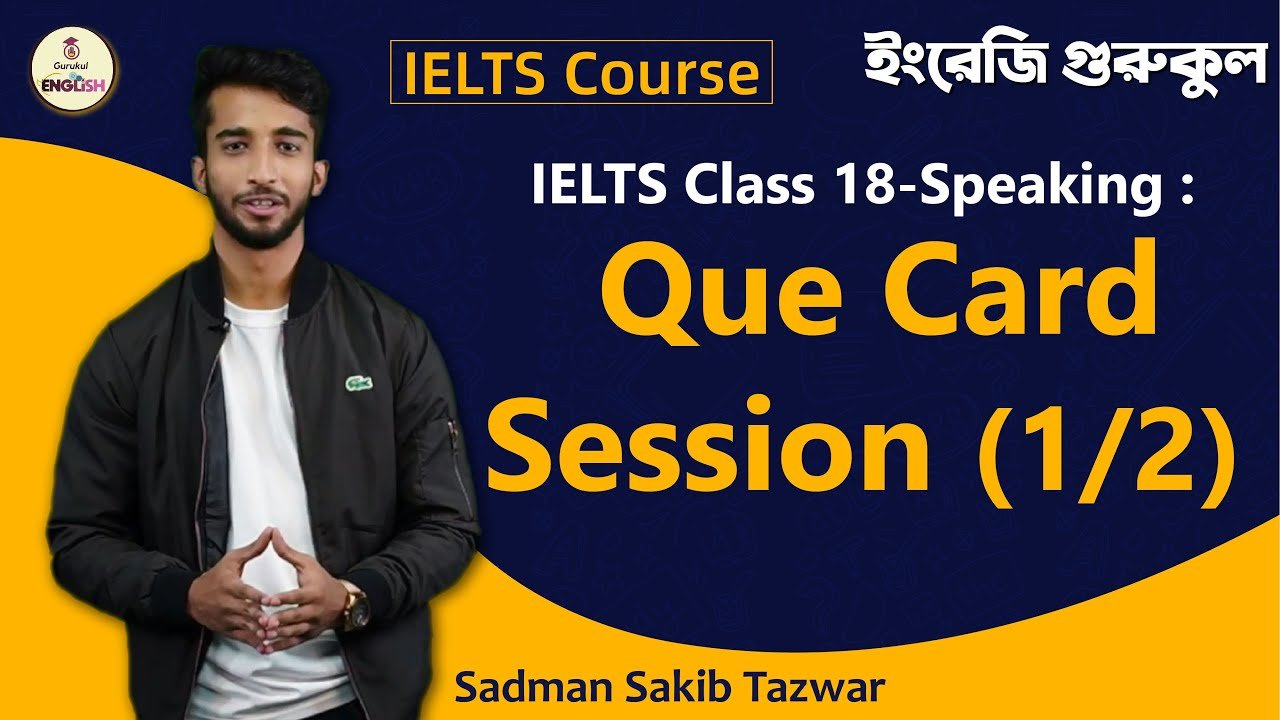Que Card Session class is a part of our “IELTS Course”. This is the 18th class of our “IELTS Course”. Our “IELTS Course” will help you in your IELTS preparation. Prepare for the IELTS exam online at your own pace, Our “IELTS Courses” will help you get the score you need. This class has been made to help you in your IELTS examination.
Que Card Session
IELTS cue card 2023
The IELTS cue card is a crucial part of the speaking section in the test. During the speaking interview with an examiner, you will be given a cue card that contains a specific topic or task. The IELTS cue card for speaking includes questions related to the topic you should speak about. You have one minute to prepare your response and two minutes to talk about the topic.
The IELTS cue card format is structured to analyze your English language skills in various aspects, such as fluency and coherence, vocabulary, grammar, and pronunciation. The IELTS cue card topics are mostly based on personal experiences, opinions, or abstract ideas. The IELTS cue card topics and questions assess your ability to organize, present information, and communicate effectively and coherently within the given time.
IELTS cue card questions
Here are some common IELTS cue card formats you can expect during the assessment. Make sure to prepare accordingly.
Describe a course that you want to learn in the future.
- What the course is about?
- What did you like about the course?
- When do you want to start learning?
- Where can you learn the course?
- Why do you want to learn it?
Describe a memorable event from your childhood.
- Describe the event.
- When and where did it happen?
- Who were the people involved?
- Why is it memorable to you?
Talk about your favorite book or movie.
- What is the title of the book/movie?
- What is the genre and the storyline?
- Why is it your favorite?
- Would you recommend it to others? Why?
Describe a place you would like to visit.
- Which place is it?
- What do you know about the place?
- Why do you want to visit it?
- What activities would you like to do there?
Discuss a person who has had a significant impact on your life.
- Who is the person?
- How did you meet this person?
- In what ways have they influenced you?
- How has your life changed because of them?
Talk about a hobby or activity you enjoy.
- What is the hobby/activity?
- When and how did you start doing it?
- What do you like about it?
- How does it benefit you or make you feel?
Describe a recent travel experience.
- Where did you go?
- Who did you travel with?
- What did you do there?
- What did you enjoy the most about the trip?
Talk about a technological device you find useful.
- What is the device?
- How do you use it in your daily life?
- What benefits does it provide?
- Would you recommend it to others? Why?
Describe an achievement you are proud of.
- What is the achievement?
- When did it happen?
- How did you accomplish it?
- Why is it significant to you?
Discuss a cultural event or festival you have attended.
- Which event or festival was it?
- When and where did it take place?
- What were the highlights of the event?
- How did you feel about the experience?
Talk about a challenging situation you faced and how you dealt with it.
- What was the situation?
- How did it challenge you?
- What steps did you take to overcome it?
- What did you learn from the experience?
Details about Que Card Session – English Grammar :
